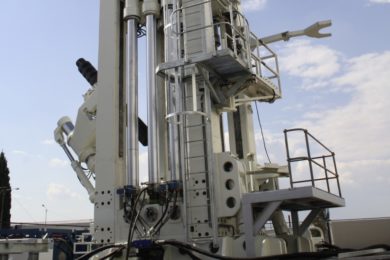In a leaner global market, operational efficiency and risk reduction are key considerations in any project. WorleyParsons RSA, a leading provider of professional services to the resources and energy sectors, says it has spent the last few years developing sophisticated, digital project design platforms that go beyond 3D modelling to address these variables which have been largely unpredictable in the past.
Building Information Modelling (BIM) is an intelligent 3D model-based process that gives architecture, engineering, and construction (AEC) professionals the insight and tools to more efficiently plan, design, construct and manage buildings and infrastructure. BIM is not a new concept but is historically associated with commercial architectural and infrastructure fields.
At WorleyParsons’ Global Centre for Excellence in mining and minerals processing, WorleyParsons RSA has already been using 3D, 4D and 5D design data mapping for mining and minerals processing projects “to create integrated design platforms that incorporate schedule and cost and, in the process, save customers time and money. The company has also recently started to operate in the 7D space, allowing real time access to operational related metadata for equipment and systems within a project with a click of a mouse in a virtual or augmented reality environment for their customers.”
BIM Manager at WorleyParsons RSA, Russell Du Plessis, says that every project has a similar asset life cycle, beginning with user requirements definition and design before moving on to manufacture, fabrication, construction, operations and finally closure and restoration. The difference with using BIM is that the entire process is digitised.
“WorleyParsons RSA has for some time been applying BIM principles and systems in the mining and minerals processing sectors and our customers are starting to see the value in how a simulated operational facility model, or a ‘digital twin’, could improve productivity and reduce much of the risk associated with construction and commissioning, as cost and schedule overruns are often the norm in this area,” says Du Plessis.
Operating in 4D links the 3D model to the project schedule and provides greater insight during constructability reviews throughout the design process. 5D visualisation adds cost and budget components to the 4D model and provides projects with greater control and visibility of costs. Progress is captured dynamically allowing the entire project team to visualise the project objectives as never before and takes operational efficiency even further with the potential of reducing costs and construction schedule significantly through the identification and management of advanced work packaging.
The expansion of the ‘digital twin model’ into the 7D space now enhances project execution efficiencies in the commissioning, start-up and operational phases of the project lifecycle. “The ‘digital twin’ is essentially an operational data enhanced virtual or augmented reality model of the designed facility. All the metadata relating to equipment or systems on a project can be easily accessed in a user-friendly way,” explains Du Plessis. “7D visualisation therefore offers the capability to include operational and maintenance related technical data in the live model.”
Technical information related to the operation of the designed facility such as operations manuals, maintenance drawings and procedures, spare parts lists, drawings, etc are integrated in a logical and structured manner directly in the facility model. This ‘virtual information’ model can then be handed from the design integration team to the facility owner or operator as a single digital model.
This reduces information loss risks that traditionally occurred when a new operations team takes ‘ownership’ of the designed and commissioned facility, and provides more extensive information to owners of complex facilities.
“WorleyParsons RSA has successfully implemented this integrated technology for various projects where value improvements were quickly identified by picking up optimisation from the previous design by using BIM based design technology.”
Du Plessis says that by using an integrated design model, WorleyParsons RSA was able to complete FEED (Front End Engineering and Design) phase and value improvement studies simultaneously and determine accurate costs, enabling the next phase – the detailed engineering – to be undertaken quickly and very accurately, resulting in a predictable constructed cost.










